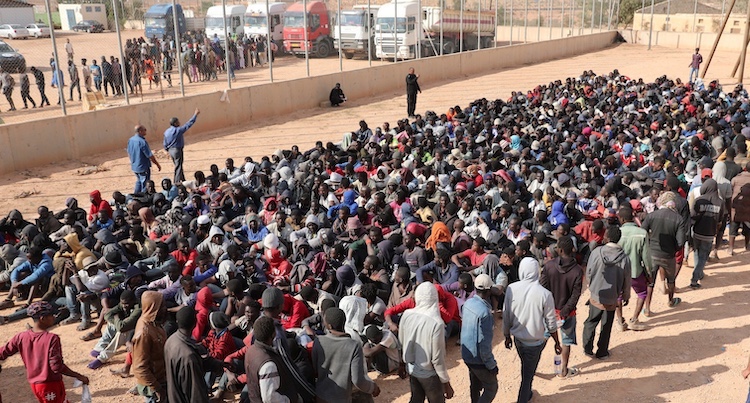By Reinhard Jacobsen
BRUSSELS (IDN) — Eritrean refugees are trafficked and enslaved in Libya, where they are tortured, abused and raped by slave traders to force family members to pay ransom for their release. If they escape and make it to the Mediterranean Sea, they risk being intercepted and sent back to Libya or dying at sea.

< Credit: African Books Collective
These are the appalling findings of a team of researchers led by Professor Mirjam van Reisen in a newly published book titled ENSLAVED. Trapped and Trafficked in Digital Black Holes: Human Trafficking Trajectories to Libya.
According to the researchers, human traffickers deploy ingenious digital methods, such as a tag with a digital code and carry refugees through a series of “black holes,” digital vacuums. This controls their access to digital technologies and connectivity. More than one billion US dollars is believed to be involved in this crime.
Refugees fleeing dictatorship in their countries are abused, extorted and subjected to sexual violence. Many die along the way. During the period of this study (2017-2021), at least two hundred thousand refugees—men, women and children—are estimated to have become victims of human trafficking for ransom in Libya. Most of the refugees are from Eritrea.
The policy of the European Union fuels situation
The book ‘ENSLAVED’ argues that unequal access to and control over digital technologies and connectivity help enable the slave trade. The policies of the European Union, Libya and other countries in the Horn of Africa have also allowed this situation to persist and even fuel it. With no legal way out, Eritreans become trapped in a cycle of human trafficking from which it is difficult, if not impossible, to escape.
The research came about through contact with refugees on the ground, who managed to make and send secret recordings or communicate secretly by phone via social media. Most of the interviews conducted with refugees who managed to escape took place in surrounding countries, such as Niger, Sudan and Tunisia. Interviews were also held with refugees who had reached Europe.
This detailed ethnographic study identifies the routes, modus operandi, organization and key actors involved in human trafficking for ransom of refugees and migrants. They urgently need protection in accordance with international law.
The book is part of the GAIC Research Network and African studies series published by Langaa RPCIG and is an important contribution to the literature on human trafficking, migration studies, African studies, modern slavery, social protection and governance.
The detailed research took place under the leadership of Prof. Dr Mirjam van Reisen, who holds the Chair of International Relations, Innovation and Care at Tilburg University, in collaboration with Prof. Dr Munyaradzi Mawere, Professor of Extraordinarius Interdisciplinary Research at Unisa University.
He is also a Professor of African Studies and holds the Research Chair at Great Zimbabwe University. Klara Smits is a doctoral candidate at Tilburg University specializing in human trafficking trajectories from Eritrea to Libya. Morgane Wirtz is a PhD candidate at Tilburg University and researches human trafficking and sexual violence in Libya. [IDN-InDepthNews — 05 February 2023]
Contact: For more information for the book and the authors, please contact klarasmits@gmail.com and persvoorlichters@tilburguniversity.edu, tel. 013.4664000.
Image: Eritrean refugees detained in Libya. Source: Eritrea Hub.
IDN is the flagship agency of the Non-profit International Press Syndicate.
Visit us on Facebook and Twitter.
We believe in the free flow of information. Republish our articles for free, online or in print, under Creative Commons Attribution 4.0 International, except for articles that are republished with permission.

